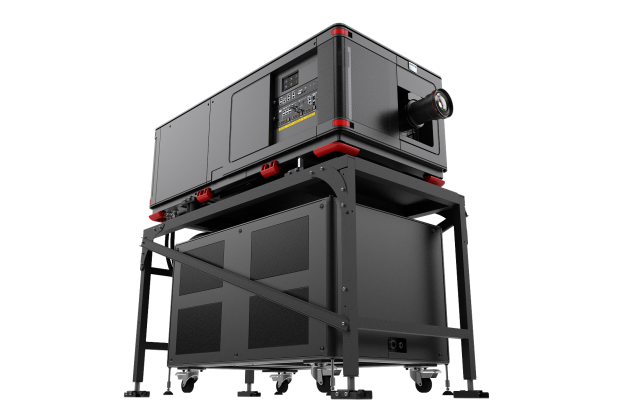CinemaCon: Barco to Unveil Anticipated HDR Projection System Aimed at Giving Filmmakers a Wider Creative Palette

It’s been one of Hollywood’s most sought-after invitations.
For the past few years, a who’s who of directors, cinematographers, studio execs and exhibitors have been quietly ushered into an unmarked room at the famed Glen Glenn Sound facility in Los Angeles. They’ve made the trek to get a peek at new projection technology that has been in the works for years at Barco, the Belgian tech firm known for its high-end cinema exhibition systems.
More from Variety
Industry insiders are abuzz at the promise that Barco’s lat- est innovation could radically upgrade the picture quality of films shown at the average multiplex. After years of development, Barco is ready to make a big splash at CinemaCon by showing off its new HDR by Barco laser projection system using remastered footage from Hollywood movies. HDR stands for “high dynamic range,” which expands the color contrast of visual imagery.
With a few exceptions, the vast majority of the world’s movie theaters project films in standard dynamic range. Barco thinks it’s time for an upgrade, and built a new HDR line on its proprietary “light steering” technology.
“With your phone, your laptop, your iPad, your TV, there’s HDR everywhere,” says Anders Ballestad, who co-developed the Barco system with fellow engineer Gerwin Damberg. The pair started their work at Vancouver-based MTT Innovation, which was acquired by Barco in 2016. “We had this idea — we felt that this could improve cinema — and we went for it,” Ballestad says.
Simply put, the technology allows a projector to redistribute light in such a way as to give movies more range between the brightest highlights in sunny scenes and the deepest black tones in scenes shot in dimmer light. They believe such pictures deliver an “experience leap” for moviegoers.
So does cinematographer Markus Förderer, whose recent credits include the Netflix movie “Red Notice” and the Apple TV+ series “Constellation.” “How the audience sees our work is so important,” Förderer says. “For filmmakers, we want to know that as many people as possible can see our work in the best possible way.”
Förderer is pretty sure Barco’s technology will be embraced by cinematographers and directors. “This is the best right now,” he says. “We live in 2024; we deserve a technology like this.”
Barco has yet to reveal the price tag for the projection system. As ever, the cost of acquiring new equipment may be prohibitive for some theater chains. Damberg says that Barco will take steps to help early adopters pay for an HDR upgrade. “We’re going to structure it in such a way that we share the risk and the reward on this technology becoming a thing,” he says.
Initially, the pair expects the projectors to be installed in high-end cinemas and auditoriums while Barco works toward a wider rollout.
Bringing the HDR system into theaters means that studios will have to provide movies in a new HDR-friendly format. Barco leaders have been working to install HDR projectors in key postproduction facilities; the hope is to whet the appetites of directors and cinematographers for the upgraded visuals. Barco has been working with Marvel to test grading content using the HDR by Barco system at Disney, with the goal of supporting the industry-recognized HDR spec.
Damberg admits that the initial reaction from filmmakers and dis- tributors might be “Now we have to remaster for HDR? We already have so many deliverables!” But he suggests that over the long haul, implementing HDR technology during postproduction could streamline the process of creating HDR home deliverables while achieving the ultimate goal: better picture quality.
“In the big picture, it actually simplifies the overall way that content is created,” Damberg says.
VIP+ Analysis: Could Barco Brighten Digital Cinema Market?
Best of Variety
Sign up for Variety’s Newsletter. For the latest news, follow us on Facebook, Twitter, and Instagram.
